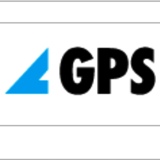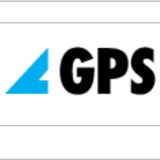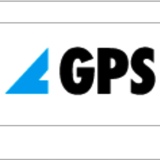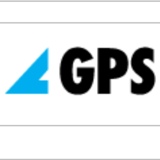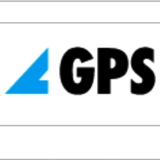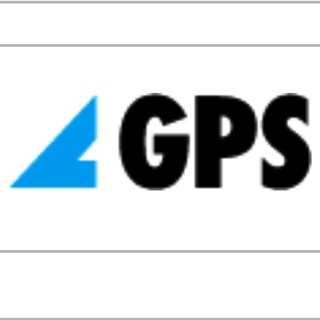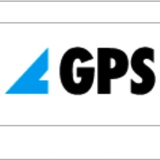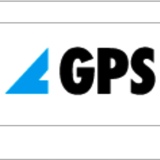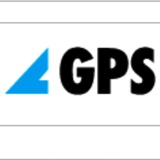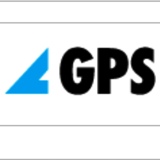Information
-
Assessment Number
-
Enter the Zone, type of assessment and next number in sequence from risk assessment index for the assessment type
-
Description of Area/Zone being assessed
-
Site/Department
-
Conducted by:
-
Conducted on
-
Review Period
-
Risk assessment should be reviewed where there is a change in equipment, people or process but in any case, should be reviewed every three years as a minimum
General Help
-
Scores are:
1 = No Action
2 = Additional controls MAY be required to improve (3 months)
3 = Additional controls MAY be required to improve (1 month)
4 = Additional controls ARE required to improve (1 month)
6 = Immediate action is required (7 days)
9 = STOP PROCESS AND RECTIFY BEFORE RESTART -
If the hazard is present, answer "Yes" and if not present, answer "No", and then rate the hazard once scored
If considered to be at a level where additional controls are not required, then the selection should be "safe" (this could be a score of 1 or 2).
Note:
- If a score of 2, actions could still be requested, but the setting could still be "safe"
- If a score of 3, then the assessor must use their judgement to determine whether further actions are required. If actions are needed then the item should be set to "at risk"
- If a score of 4, 6 or 9 then the selection should be "at risk" and additional controls are needed -
Take photographs or sketch to help clarify the hazard (or indeed the lack of hazard) as required in each section.
If the hazard is present, then you must select "Safe" or "At Risk" for each hazard category -
Ensure that the hierarchy of risk control is applied to actions:
1 - Eliminate - remove the hazard or stop the activity
2 - Reduce - Use smaller amounts of the particular hazardous substance or reduce the number of times a piece of equipment needs to be used or the number of times the task needs to be carried out
3 - Replace - Use an alternative substance or piece of equipment, or adapt the job design, workplace layout, work routines etc.
4 - Isolate - use suitable guarding on dangerous parts of machinery to keep people away from the hazard
5 - Innovate - Technical safety devices (such as residual current devices) and innovative work routines and ergonomic improvements
6 - Conform - Safety procedures and instruction, including method statements and permits to work
7 - Protect - PPE such as goggles (collective protection such as guards should take preference to individual protection)
8 - Discipline - Enforcement of safety rules and arrangements
The lower the number the more effective the action!
Hazards related to the Workplace
1. Hazards relating to segregation of pedestrians and vehicles
-
Guidance:
- Are there suitable crossing points for pedestrians?
- Are there suitable pedestrian walkways/gangways which keep pedestrians and vehicles apart?
- Are there people working near vehicle entrances and exits?
- Are there suitable pedestrian doors next to vehicle entrances/exits?
- Do people park on traffic routes?
- Are there suitable barriers to prevent pedestrians walking through a doorway directly onto a traffic route? -
Consider areas such as reversing, tipping, loading and unloading operations, walking across loading areas, car park areas (especially where these also have delivery areas, or cross main traffic routes) and inside the factory
-
Are there hazards related to pedestrians and vehicle segregation?
-
Who might be harmed?
- Operator
- Technician
- Maintenance
- Visitor
- Driver
- Warehouse Operative
- Other
-
You selected other, please specify:
-
How might they be harmed?
-
What controls already exist?
-
What is the likelihood of harm?
-
What is the severity?
-
Total Score of likelihood x severity
- 0 - Not Applicable
- 1 - No Action is required
- 2 - Additional controls may be needed
- 3 - Additional controls may be needed
- 4 - Additional controls are needed
- 6 - Immediate Action Needed
- 9 - STOP IMMEDIATELY
-
Rate the Hazard (Comment mandatory for scores of 3 and above)
-
Action(s) required:
you must also identify who is responsible for the action(s)
Action(s)
-
Action
-
Responsibility:
2. Hazards related to collision with other vehicles, people or equipment/materials
-
Guidance:
- Are there suitable one way systems in operation to prevent vehicle collision(s)?
- Are there blind bends or sharp corners?
- Are there speed limits posted and adhered to?
- Are roadways and pedestrian walkways clearly marked?
- Is there suitable impact protection for delicate, fragile or volatile materials? (eg gas storage, bund walls, racking systems)
- Is there sufficient room to manoeuvre?
- Are there other activities taking place on traffic routes? (e.g. maintenance repairs etc)
- if maintenance or other activities are taking place on traffic routes, are these areas suitably cordoned off?
- Is the access and egress to site clear of other traffic or pedestrians? -
Are there Hazards reacted to collision with vehicles, people or equipment?
-
Who might be harmed?
- Operator
- Technician
- Maintenance
- Visitor
- Driver
- Warehouse Operative
- Other
-
You selected other, please specify:
-
How might they be harmed?
-
What controls already exist?
-
What is the likelihood of harm?
-
What is the severity?
-
Total Score of likelihood x severity
- 0 - Not Applicable
- 1 - No Action is required
- 2 - Additional controls may be needed
- 3 - Additional controls may be needed
- 4 - Additional controls are needed
- 6 - Immediate Action Needed
- 9 - STOP IMMEDIATELY
-
Rate the Hazard (Comment mandatory for scores of 3 and above)
-
Action(s) required:
you must also identify who is responsible for the action(s)
Action(s)
-
Action
-
Responsibility:
3. Hazards related to the condition of the traffic routes
-
Guidance:
- Is the area free from pot holes or damage which could result in instability of vehicles or their load?
- Is the area well lit, with good visibility?
- Is the area free from sharp gradients or slopes or significant changes in level? especially where this could cause problems with loading or unloading
- Is the area well drained, and suitably treated in wintry weather ?
- Are road markings clear and visible? -
Are there hazards related to the condition of the traffic routes?
-
Who might be harmed?
- Operator
- Technician
- Maintenance
- Visitor
- Driver
- Warehouse Operative
- Other
-
You selected other, please specify:
-
How might they be harmed?
-
What controls already exist?
-
What is the likelihood of harm?
-
What is the severity?
-
Total Score of likelihood x severity
- 0 - Not Applicable
- 1 - No Action is required
- 2 - Additional controls may be needed
- 3 - Additional controls may be needed
- 4 - Additional controls are needed
- 6 - Immediate Action Needed
- 9 - STOP IMMEDIATELY
-
Rate the Hazard (Comment mandatory for scores of 3 and above)
-
Action(s) required:
you must also identify who is responsible for the action(s)
Action(s)
-
Action
-
Responsibility:
4. Hazards related to signage
-
Guidance:
- Are speed limits clearly signed?
- Are there appropriate direction signs and signs for delivery/collection areas?
- Are there suitable height warning signs?
- Are there give way, stop, and warning signs?
- Are there signs warning pedestrians of vehicle movements?
- Are there signs directing visitors to car parks, and telling them where to go on arrival, and where they can and cannot walk? -
Are there hazards related to lack of signage?
-
Who might be harmed?
- Operator
- Technician
- Maintenance
- Visitor
- Driver
- Warehouse Operative
- Other
-
You selected other, please specify:
-
How might they be harmed?
-
What controls already exist?
-
What is the likelihood of harm?
-
What is the severity?
-
Total Score of likelihood x severity
- 0 - Not Applicable
- 1 - No Action is required
- 2 - Additional controls may be needed
- 3 - Additional controls may be needed
- 4 - Additional controls are needed
- 6 - Immediate Action Needed
- 9 - STOP IMMEDIATELY
-
Rate the Hazard (Comment mandatory for scores of 3 and above)
-
Action(s) required:
you must also identify who is responsible for the action(s)
Action(s)
-
Action
-
Responsibility:
People Hazards (Related to the Individual)
1. Hazards related to information, instruction and training
-
Guidance:
- Are all visiting drivers given sufficient information about the site rules?
- Are all visiting drivers given clear directions?
- Are all fork lift drivers suitably trained, instructed and supervised?
- Are there issues with language?
- Are there clear policies related to reversing, tipping, loading and unloading? -
Are there hazards relating to the lack of information, instruction and training?
-
Who might be harmed?
- Operator
- Technician
- Maintenance
- Visitor
- Driver
- Warehouse Operative
- Other
-
You selected other, please specify:
-
How might they be harmed?
-
What controls already exist?
-
What is the likelihood of harm?
-
What is the severity?
-
Total Score of likelihood x severity
- 0 - Not Applicable
- 1 - No Action is required
- 2 - Additional controls may be needed
- 3 - Additional controls may be needed
- 4 - Additional controls are needed
- 6 - Immediate Action Needed
- 9 - STOP IMMEDIATELY
-
Rate the Hazard (Comment mandatory for scores of 3 and above)
-
Action(s) required:
you must also identify who is responsible for the action(s)
Action(s)
-
Action
-
Responsibility:
2. Hazards Related to Behaviour
-
Guidance:
Look for examples of:
- Are drivers wearing required PPE?
- Are drivers wearing seat belts?
- Are there signs of drivers exceeding the site speed limit?
- Are vehicles secured prior to be being left unattended?
- Are vehicles being correctly loaded/unloaded?
- Are visiting drivers supervised?
- Do employees use pedestrian gates where provided, and keep to appropriate walkways? -
Are there hazards relating to visiting drivers, or employee behaviour?
-
Who might be harmed?
- Operator
- Technician
- Maintenance
- Visitor
- Driver
- Warehouse Operative
- Other
-
You selected other, please specify:
-
How might they be harmed?
-
What controls already exist?
-
What is the likelihood of harm?
-
What is the severity?
-
Total Score of likelihood x severity
- 0 - Not Applicable
- 1 - No Action is required
- 2 - Additional controls may be needed
- 3 - Additional controls may be needed
- 4 - Additional controls are needed
- 6 - Immediate Action Needed
- 9 - STOP IMMEDIATELY
-
Rate the Hazard (Comment mandatory for scores of 3 and above)
-
Action(s) required:
you must also identify who is responsible for the action(s)
Action(s)
-
Action
-
Responsibility:
3. Hazards related to capability
-
Guidance:
- Is there any evidence of drivers being unfit to drive, through drink or drugs
- Are drivers suitably qualified? And hold appropriate licences (employees)
- Are regular health checks conducted? -
Are there any hazards related to capability?
-
Who might be harmed?
- Operator
- Technician
- Maintenance
- Visitor
- Driver
- Warehouse Operative
- Other
-
You selected other, please specify:
-
How might they be harmed?
-
What controls already exist?
-
What is the likelihood of harm?
-
What is the severity?
-
Total Score of likelihood x severity
- 0 - Not Applicable
- 1 - No Action is required
- 2 - Additional controls may be needed
- 3 - Additional controls may be needed
- 4 - Additional controls are needed
- 6 - Immediate Action Needed
- 9 - STOP IMMEDIATELY
-
Rate the Hazard (Comment mandatory for scores of 3 and above)
-
Action(s) required:
you must also identify who is responsible for the action(s)
Action(s)
-
Action
-
Responsibility:
Material (Load) Hazards
1. Stability of the load
-
Guidance:
- Are loads properly stacked and stable before lifting, loading or unloading?
- Are loads liable to shift whilst loading or unloading? (causing unstable vehicle)
- Are loads evenly spread on the vehicle bed? (causing vehicle to tip)
- Are loads liable to sticking whilst being tipped? (e.g. material deliveries -causing vehicle to become top heavy)
- Are all pallets and containers in good condition? (Loss of load)
- Is there a risk of loads falling from height? (from storage location or from bed of vehicle)
- Are loads suitably secured before driving off? -
Are there hazards relating to stability of loads?
-
Who might be harmed?
- Operator
- Technician
- Maintenance
- Visitor
- Driver
- Warehouse Operative
- Other
-
You selected other, please specify:
-
How might they be harmed?
-
What controls already exist?
-
What is the likelihood of harm?
-
What is the severity?
-
Total Score of likelihood x severity
- 0 - Not Applicable
- 1 - No Action is required
- 2 - Additional controls may be needed
- 3 - Additional controls may be needed
- 4 - Additional controls are needed
- 6 - Immediate Action Needed
- 9 - STOP IMMEDIATELY
-
Rate the Hazard (Comment mandatory for scores of 3 and above)
-
Action(s) required:
you must also identify who is responsible for the action(s)
Action(s)
-
Action
-
Responsibility:
Vehicles
1. Vehicle Warning systems
-
Guidance:
Are vehicles fitted with suitable audible warning devices? (eg sirens, reversing alarms, manual horns, and other features such as lights, flashing beacons, reversing lights, reflectors etc) -
Are there hazards related to lack of vehicle warning systems?
-
Who might be harmed?
- Operator
- Technician
- Maintenance
- Visitor
- Driver
- Warehouse Operative
- Other
-
You selected other, please specify:
-
How might they be harmed?
-
What controls already exist?
-
What is the likelihood of harm?
-
What is the severity?
-
Total Score of likelihood x severity
- 0 - Not Applicable
- 1 - No Action is required
- 2 - Additional controls may be needed
- 3 - Additional controls may be needed
- 4 - Additional controls are needed
- 6 - Immediate Action Needed
- 9 - STOP IMMEDIATELY
-
Rate the Hazard (Comment mandatory for scores of 3 and above)
-
Action(s) required:
you must also identify who is responsible for the action(s)
Action(s)
-
Action
-
Responsibility:
2. Vehicle maintenance and servicing
-
Guidance:
Are vehicles regularly checked before use, serviced at regular intervals and certified as required? (e.g. safe working load) -
Are there hazards related to lack of vehicle maintenance, servicing or certification?
-
Who might be harmed?
- Operator
- Technician
- Maintenance
- Visitor
- Driver
- Warehouse Operative
- Other
-
You selected other, please specify:
-
How might they be harmed?
-
How might they be harmed?
-
What controls already exist?
-
What is the likelihood of harm?
-
What is the severity?
-
Total Score of likelihood x severity
- 0 - Not Applicable
- 1 - No Action is required
- 2 - Additional controls may be needed
- 3 - Additional controls may be needed
- 4 - Additional controls are needed
- 6 - Immediate Action Needed
- 9 - STOP IMMEDIATELY
-
Rate the Hazard (Comment mandatory for scores of 3 and above)
-
Action(s) required:
you must also identify who is responsible for the action(s)
Action(s)
-
Action
-
Responsibility:
3. Condition
-
Guidance:
Are vehicles in good condition? for example:
- No damaged curtains or straps
- Hydraulic Hoses in good condition?
- No structural damage to sides, bed or tailgates?
- Roadworthy (working brakes -including handbrake, good tyres etc)
- Is there a defect reporting process in place?
- Is visibility good from all windows, through all canopies, rear windows etc?
- Are moving parts correctly guarded?
- Are all seatbelt/restraining devices fitted and functional
- Is all protection from rollover or falling objects fitted and in good condition? -
Are there hazards related to condition of vehicles
-
Who might be harmed?
- Operator
- Technician
- Maintenance
- Visitor
- Driver
- Warehouse Operative
- Other
-
You selected other, please specify:
-
How might they be harmed?
-
How might they be harmed?
-
What controls already exist?
-
What is the likelihood of harm?
-
What is the severity?
-
Total Score of likelihood x severity
- 0 - Not Applicable
- 1 - No Action is required
- 2 - Additional controls may be needed
- 3 - Additional controls may be needed
- 4 - Additional controls are needed
- 6 - Immediate Action Needed
- 9 - STOP IMMEDIATELY
-
Rate the Hazard (Comment mandatory for scores of 3 and above)
-
Action(s) required:
you must also identify who is responsible for the action(s)
Action(s)
-
Action
-
Responsibility:
4. Suitability and stability
-
Guidance:
Is the vehicle suitable for the task being undertaken? For example:
- Correct SWL and load capacities
- Correct type of Fork Lift Truck in use for the application (eg narrow Aisle, counterbalance etc)
- Correct size for the load being carried
- Has appropriate stabilisers if needed
- Can be secured/chocked during loading and unloading -
Are there hazards related to
-
Who might be harmed?
- Operator
- Technician
- Maintenance
- Visitor
- Driver
- Warehouse Operative
- Other
-
You selected other, please specify:
-
How might they be harmed?
-
How might they be harmed?
-
What controls already exist?
-
What is the likelihood of harm?
-
What is the severity?
-
Total Score of likelihood x severity
- 0 - Not Applicable
- 1 - No Action is required
- 2 - Additional controls may be needed
- 3 - Additional controls may be needed
- 4 - Additional controls are needed
- 6 - Immediate Action Needed
- 9 - STOP IMMEDIATELY
-
Rate the Hazard (Comment mandatory for scores of 3 and above)
-
Action(s) required:
you must also identify who is responsible for the action(s)
Action(s)
-
Action
-
Responsibility:
5. Security
-
Guidance:
Check to see if the vehicles are left in a state which would allow unauthorised persons to access the vehicle and drive it. -
Are there hazards related to security of the vehicle
-
Who might be harmed?
- Operator
- Technician
- Maintenance
- Visitor
- Driver
- Warehouse Operative
- Other
-
You selected other, please specify:
-
How might they be harmed?
-
How might they be harmed?
-
What controls already exist?
-
What is the likelihood of harm?
-
What is the severity?
-
Total Score of likelihood x severity
- 0 - Not Applicable
- 1 - No Action is required
- 2 - Additional controls may be needed
- 3 - Additional controls may be needed
- 4 - Additional controls are needed
- 6 - Immediate Action Needed
- 9 - STOP IMMEDIATELY
-
Rate the Hazard (Comment mandatory for scores of 3 and above)
-
Action(s) required:
you must also identify who is responsible for the action(s)
Action(s)
-
Action
-
Responsibility:
6. Access and egress
-
Guidance:
- Is there safe means of access and egress to the cab of the vehicle
- Is there safe access and egress to to the bed of the trailer if necessary using proper access equipment -
Are there hazards related to access and egress
-
Who might be harmed?
- Operator
- Technician
- Maintenance
- Visitor
- Driver
- Warehouse Operative
- Other
-
You selected other, please specify:
-
How might they be harmed?
-
How might they be harmed?
-
What controls already exist?
-
What is the likelihood of harm?
-
What is the severity?
-
Total Score of likelihood x severity
- 0 - Not Applicable
- 1 - No Action is required
- 2 - Additional controls may be needed
- 3 - Additional controls may be needed
- 4 - Additional controls are needed
- 6 - Immediate Action Needed
- 9 - STOP IMMEDIATELY
-
Rate the Hazard (Comment mandatory for scores of 3 and above)
-
Action(s) required:
you must also identify who is responsible for the action(s)
Action(s)
-
Action
-
Responsibility:
7. Information
-
Guidance:
- Are all operating controls suitably marked?
- Are all safe working loads suitably marked?
- Are appropriate warning signs displayed? -
Are there hazards related to lack of information?
-
Who might be harmed?
- Operator
- Technician
- Maintenance
- Visitor
- Driver
- Warehouse Operative
- Other
-
You selected other, please specify:
-
How might they be harmed?
-
How might they be harmed?
-
What controls already exist?
-
What is the likelihood of harm?
-
What is the severity?
-
Total Score of likelihood x severity
- 0 - Not Applicable
- 1 - No Action is required
- 2 - Additional controls may be needed
- 3 - Additional controls may be needed
- 4 - Additional controls are needed
- 6 - Immediate Action Needed
- 9 - STOP IMMEDIATELY
-
Rate the Hazard (Comment mandatory for scores of 3 and above)
-
Action(s) required:
you must also identify who is responsible for the action(s)
Action(s)
-
Action
-
Responsibility:
Processes
1. Hazards relating to reversing:
-
Guidance:
- Is the need for reversing minimised?
- If reversing is necessary, are people kept away from the reversing area?
- Is there a person allocated to help vehicles reverse?
- Is there a clear policy for reversing? -
Are there hazards related to reversing?
-
Who might be harmed?
- Operator
- Technician
- Maintenance
- Visitor
- Driver
- Warehouse Operative
- Other
-
You selected other, please specify:
-
How might they be harmed?
-
What controls already exist?
-
What is the likelihood of harm?
-
What is the severity?
-
Total Score of likelihood x severity
- 0 - Not Applicable
- 1 - No Action is required
- 2 - Additional controls may be needed
- 3 - Additional controls may be needed
- 4 - Additional controls are needed
- 6 - Immediate Action Needed
- 9 - STOP IMMEDIATELY
-
Rate the Hazard (Comment mandatory for scores of 3 and above)
-
Action(s) required:
you must also identify who is responsible for the action(s)
Action(s)
-
Action
-
Responsibility:
2. Hazards relating to loading and unloading:
-
Guidance:
- Is there a policy for loading and unloading?
- look for issues related to loading and unloading not already identified in other areas -
Are there hazards related to loading and unloading?
-
Who might be harmed?
- Operator
- Technician
- Maintenance
- Visitor
- Driver
- Warehouse Operative
- Other
-
You selected other, please specify:
-
How might they be harmed?
-
What controls already exist?
-
What is the likelihood of harm?
-
What is the severity?
-
Total Score of likelihood x severity
- 0 - Not Applicable
- 1 - No Action is required
- 2 - Additional controls may be needed
- 3 - Additional controls may be needed
- 4 - Additional controls are needed
- 6 - Immediate Action Needed
- 9 - STOP IMMEDIATELY
-
Rate the Hazard (Comment mandatory for scores of 3 and above)
-
Action(s) required:
you must also identify who is responsible for the action(s)
Action(s)
-
Action
-
Responsibility:
3. Hazards related to Tipping
-
Guidance:
- Is there a suitable area for tipping operations? From from slopes or steps
- Are persons kept away from tipping vehicles?
- Is there a clear policy for tipping operations?
- Are vehicles stabilised during tipping
- Is the load monitored for "sticking"? -
Are there any hazards related to tipping operations
-
Who might be harmed?
- Operator
- Technician
- Maintenance
- Visitor
- Driver
- Warehouse Operative
- Other
-
You selected other, please specify:
-
How might they be harmed?
-
What controls already exist?
-
What is the likelihood of harm?
-
What is the severity?
-
Total Score of likelihood x severity
- 0 - Not Applicable
- 1 - No Action is required
- 2 - Additional controls may be needed
- 3 - Additional controls may be needed
- 4 - Additional controls are needed
- 6 - Immediate Action Needed
- 9 - STOP IMMEDIATELY
-
Rate the Hazard (Comment mandatory for scores of 3 and above)
-
Action(s) required:
you must also identify who is responsible for the action(s)
Action(s)
-
Action
-
Responsibility:
4. Hazards related to static discharge
-
Guidance:
Some materials can be prone to electrostatic build up (for example, PVC powders, and plastic granules) - are vehicles grounded to prevent this ? -
Are there any hazards related to Electrostatic Discharge?
-
Who might be harmed?
- Operator
- Technician
- Maintenance
- Visitor
- Driver
- Warehouse Operative
- Other
-
You selected other, please specify:
-
How might they be harmed?
-
What controls already exist?
-
What is the likelihood of harm?
-
What is the severity?
-
Total Score of likelihood x severity
- 0 - Not Applicable
- 1 - No Action is required
- 2 - Additional controls may be needed
- 3 - Additional controls may be needed
- 4 - Additional controls are needed
- 6 - Immediate Action Needed
- 9 - STOP IMMEDIATELY
-
Rate the Hazard (Comment mandatory for scores of 3 and above)
-
Action(s) required:
you must also identify who is responsible for the action(s)
Action(s)
-
Action
-
Responsibility:
5. Hazards related to Sheeting operations
-
Guidance:
- Is sheeting conducted in safe partrs of the workplace, away from passing traffic and pedestrians?
- Is sheet conducted away from strong winds and bad weather?
- Are gloves, safety boots, eye/head protection worn?
- Is there a policy for sheeting? does it minimise the need for working at height? -
Are there any hazards related to sheeting operations?
-
Who might be harmed?
- Operator
- Technician
- Maintenance
- Visitor
- Driver
- Warehouse Operative
- Other
-
You selected other, please specify:
-
How might they be harmed?
-
What controls already exist?
-
What is the likelihood of harm?
-
What is the severity?
-
Total Score of likelihood x severity
- 0 - Not Applicable
- 1 - No Action is required
- 2 - Additional controls may be needed
- 3 - Additional controls may be needed
- 4 - Additional controls are needed
- 6 - Immediate Action Needed
- 9 - STOP IMMEDIATELY
-
Rate the Hazard (Comment mandatory for scores of 3 and above)
-
Action(s) required:
you must also identify who is responsible for the action(s)
Action(s)
-
Action
-
Responsibility:
Additional issues
1. Additional check items
-
Guidance:
Add any additional items checked during the assessment and rate the hazard if present -
Add additional checks performed
Check Number :
-
Describe additional check - is hazard present?
-
Who might be harmed?
- Operator
- Technician
- Maintenance
- Visitor
- Driver
- Warehouse Operative
- Other
-
You selected other, please specify:
-
How might they be harmed?
-
What controls already exist?
-
What is the likelihood of harm?
-
What is the severity?
-
Total Score of likelihood x severity
- 0 - Not Applicable
- 1 - No Action is required
- 2 - Additional controls may be needed
- 3 - Additional controls may be needed
- 4 - Additional controls are needed
- 6 - Immediate Action Needed
- 9 - STOP IMMEDIATELY
-
Rate the Hazard (Comment mandatory for scores of 3 and above)
-
Action(s) required:
you must also identify who is responsible for the action(s)
Action(s)
-
Action
-
Responsibility:
Name and sign:
-
Name/Sign
